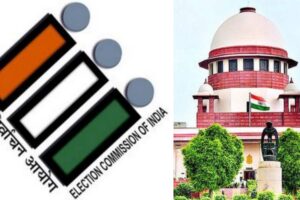
The recent ruling by the United States Supreme Court has had a significant impact on higher education, as it struck down affirmative action and created a sense of uncertainty among colleges nationwide regarding how to promote student diversity.
Leaders from numerous universities expressed disappointment with the decision on June 29, viewing it as a setback for diversity efforts.
However, many remained hopeful and determined to find alternative methods of admitting a more diverse student body, even though previous evidence suggests that eliminating affirmative action often leads to a significant decrease in enrollment among Black and Hispanic students.
President Joe Biden, sharing his disagreement with the decision, directed the Education Department to explore policies that could assist colleges in fostering diverse student populations. He also voiced his opposition to practices like legacy preferences, which provide admissions advantages to the children of alumni and tend to benefit white and affluent students.
Mr. Biden emphasized “We should never allow the country to walk away from the dream upon which it was founded. We need a new path forward, a path consistent with the law that protects diversity and expands opportunity.”
However, experiences from states that have previously banned affirmative action demonstrate that finding viable alternatives will be a formidable task.
In an attempt to achieve diversity without relying on affirmative action, colleges across the United States, from California to Florida, have implemented various strategies. Some have given greater preference to students from low-income families, while others have adopted policies to admit the top students from every community within their state.
However, years of experimentation, often spurred by state-level prohibitions on considering race in admissions, have failed to yield a clear solution. In states where race-neutral policies are mandated, many colleges have observed a decline in enrollment among Black and Hispanic students, particularly at selective institutions that have historically been predominantly white.
At Amherst College, for instance, officials estimated that adopting a completely race-neutral approach would result in a 50% reduction in the populations of Black, Hispanic, and Indigenous students.
” We fully expect it would be a significant decrease in our population,” explained Matthew McGann, Amherst’s director of admission, earlier this year.
Colleges have been bracing themselves for a potential reversal in affirmative action as they confront a conservative-leaning Supreme Court that exhibited skepticism from the beginning. In response to this uncertainty, institutions have been considering various strategies to maintain diversity in their admissions processes. One approach under consideration is the inclusion of additional essays to gain a more comprehensive understanding of an applicant’s background, a tactic that the recent Supreme Court ruling endorsed.
Chief Justice John Roberts, writing on behalf of the court’s conservative majority, clarified “Nothing prohibits universities from considering an applicant’s discussion of how race affected the applicant’s life, so long as that discussion is concretely tied to a quality of character or unique ability that the particular applicant can contribute to the university.”
In addition to the essay approach, some colleges have been contemplating increasing their efforts to recruit students from racially diverse regions or expanding admissions for transfer students from community colleges.
The Supreme Court’s examination of affirmative action was prompted by challenges faced by Harvard University and the University of North Carolina. Lower courts had previously upheld the universities’ admission systems, dismissing claims of discrimination against white and Asian American applicants. However, during Supreme Court arguments in late October, all six conservative justices expressed reservations about the practice, despite affirmative action being upheld in prior Supreme Court decisions dating back to 1978, including a ruling in 2016.
Currently, nine states have already banned affirmative action, starting with California in 1996, with the most recent being Idaho in 2020. Following the rejection of affirmative action by Michigan voters in 2006, the University of Michigan shifted its focus towards attracting and supporting low-income students.
To address the decline in racial diversity following the rejection of affirmative action in Michigan, the University of Michigan implemented several initiatives. It dispatched graduates to serve as counselors in underprivileged high schools, introduced college preparatory programs in Detroit and Grand Rapids, and provided full scholarships to low-income residents of the state. In more recent years, the university adopted a policy of accepting fewer early admission applications, which are typically submitted by white students.
Despite these efforts, the representation of Black and Hispanic undergraduates has not fully recovered from the decline experienced after 2006. While Hispanic enrollment has shown growth, the enrollment of Black students has continued to decrease, dropping from 8% of undergraduates in 2006 to 4% at present.
Although the university has attracted more low-income students, this increase has not translated into greater racial diversity, according to Erica Sanders, the director of undergraduate admissions at Michigan. Sanders emphasized that “Socioeconomic status is not a proxy for race”.
Meanwhile, some of Michigan’s less selective colleges have experienced better outcomes. Eastern Michigan University, located nearby, has witnessed an increase in the number of students of color, reflecting the shifting demographics of the state. This exemplifies a phenomenon experts refer to as a “chilling effect” that is particularly noticeable at selective institutions. Students of color perceive a lack of representation at campuses like Ann Arbor, leading them to choose universities that appear to be more inclusive and welcoming.
In Ann Arbor, Odia Kaba grew up with the expectation that she would attend the University of Michigan (U-M). However, when her application to U-M was deferred, she decided to begin her college journey at Eastern Michigan University with the intention of transferring to Ann Arbor in her sophomore year.
During that time, Ms. Kaba started receiving daily texts from her sister, who was already attending U-M, sharing her experiences of facing microaggressions as a Black student on campus. She described instances where rooms fell silent upon her entry and how she felt ignored in group projects. These accounts made Ms. Kaba feel isolated and suffocated.
Reflecting on her situation, Ms. Kaba recalled thinking, “Why would I go to U of M? I’m just going to be stuck with people that don’t look like me, can’t relate to me, and with no way to escape it.” Consequently, she chose to continue her studies at Eastern Michigan University and recently graduated with a degree in quantitative economics. Despite the predominantly white campus environment, Ms. Kaba found supportive pockets of diversity that made her feel comfortable.
She explained, “I’m in economics, which is a white male-dominated space. But I can walk out of the classroom and be surrounded by my people, and I just feel safe.”
After the University of California faced a statewide ban on affirmative action in 1996, the institution observed a decline in enrollment. Within a span of two years, the number of Black and Hispanic students dropped by half at the system’s most selective campuses, Berkeley and UCLA. In response, the university system allocated over $500 million to implement programs targeting low-income and first-generation college students.
Additionally, the University of California initiated a program that guarantees admission to the top 9% of students from each high school across the state. This effort aimed to attract talented students from diverse backgrounds. A similar program in Texas has been hailed for enhancing racial diversity, and opponents of affirmative action often highlight it as a successful model.
However, in California, although the program attracted students from a broader range of geographic areas, it had limited impact on expanding racial diversity, according to the university system’s brief to the Supreme Court. Notably, the program had minimal effect at Berkeley and UCLA, where students face fierce competition among tens of thousands of applicants.
Presently, at UCLA and Berkeley, Hispanic students constitute 20% of the undergraduate population, a higher proportion compared to 1996 but still lower than their 53% representation among California’s high school graduates. In contrast, the presence of Black students has decreased since 1996, accounting for only 2% of undergraduates at Berkeley.
Critics of affirmative action argue that certain states have thrived without its implementation. For instance, after Oklahoma banned the practice in 2012, the state’s main university experienced “no long-term severe decline” in minority enrollments, according to the state’s attorney general’s statement to the Supreme Court.
The attorney general highlighted that a recent freshman class at the University of Oklahoma had a higher number of Hispanic, Asian, and Native American students compared to 2012. While the percentage of Black students decreased, it remained similar to flagship universities in other states that permit affirmative action, as per the state’s argument.
Nevertheless, many colleges anticipate a potential decline in racial diversity. Without affirmative action, they fear unintentionally admitting fewer students of color. This could create a self-perpetuating cycle: if the numbers decrease, the campus may appear less appealing to future students of color.
Colleges express concern about this issue because they believe that racial diversity benefits the entire campus by exposing students to different perspectives and preparing them for a workforce characterized by diversity.
Moreover, the Supreme Court’s decision has the potential to reshape other aspects of admissions policies. To attract more underserved populations, experts suggest that colleges may need to eliminate policies that favor white students, such as legacy preferences, early admission programs, and reliance on standardized test scores.




